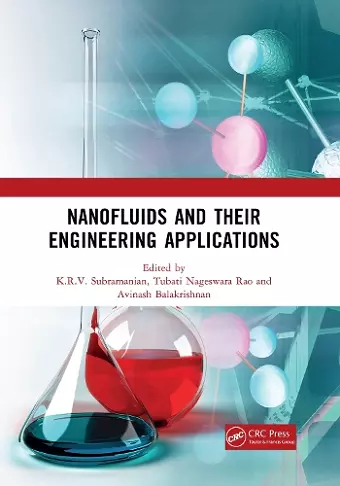Nanofluids and Their Engineering Applications
Avinash Balakrishnan author KRV Subramanian author Tubati Nageswara Rao author Avinash Balakrishnan editor KRV Subramanian editor Tubati Nageswara Rao editor
Format:Paperback
Publisher:Taylor & Francis Ltd
Published:31st Mar '21
Currently unavailable, and unfortunately no date known when it will be back
This paperback is available in another edition too:
- Hardback£175.00(9781138605268)

Nanofluids are solid-liquid composite material consisting of solid nanoparticles suspended in liquid with enhanced thermal properties. This book introduces basic fluid mechanics, conduction and convection in fluids, along with nanomaterials for nanofluids, property characterization, and outline applications of nanofluids in solar technology, machining and other special applications. Recent experiments on nanofluids have indicated significant increase in thermal conductivity compared with liquids without nanoparticles or larger particles, strong temperature dependence of thermal conductivity, and significant increase in critical heat flux in boiling heat transfer, all of which are covered in the book.
Key Features
- Exclusive title focusing on niche engineering applications of nanofluids
- Contains high technical content especially in the areas of magnetic nanofluids and dilute oxide based nanofluids
- Feature examples from research applications such as solar technology and heat pipes
- Addresses heat transfer and thermodynamic features such as efficiency and work with mathematical rigor
- Focused in content with precise technical definitions and treatment
This is a specialized edited volume on nanofluids with applications in various contexts where there are benefits associated with modifying the inherent properties of fluids. Typically, particles smaller than 100 nanometers are added to base fluids (such as water, oils, ionic liquids, glycols, and water-glycol mixtures) to improve heat transfer. Particle aggregation is avoided by designing particles that repel each other or adding chemicals that prevent aggregation, as detailed throughout the book.
--L. E. Erickson, emeritus, Kansas State University
ISBN: 9780367727543
Dimensions: unknown
Weight: 911g
498 pages